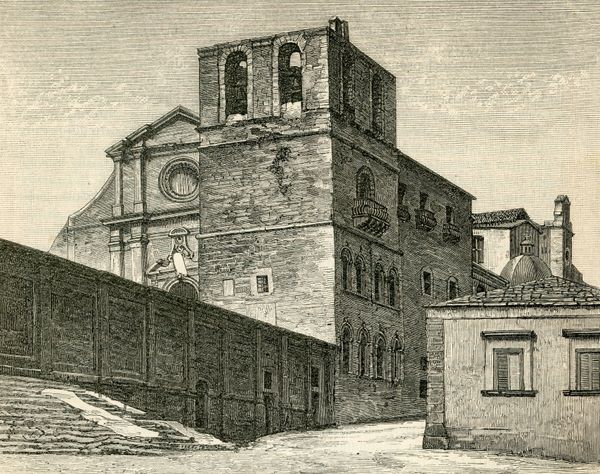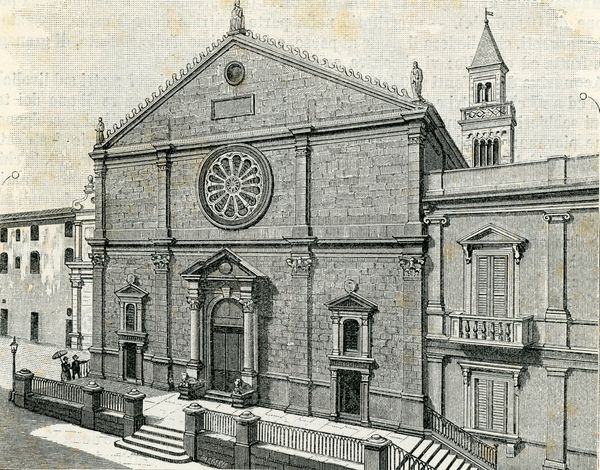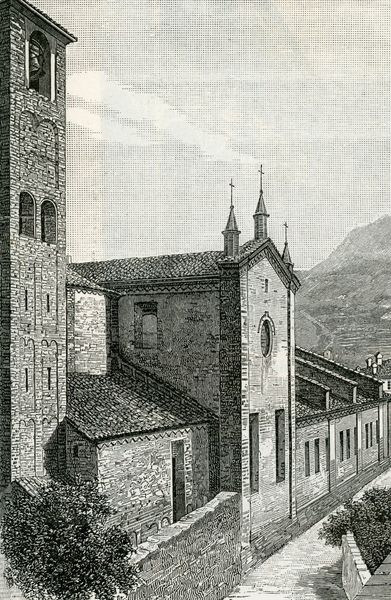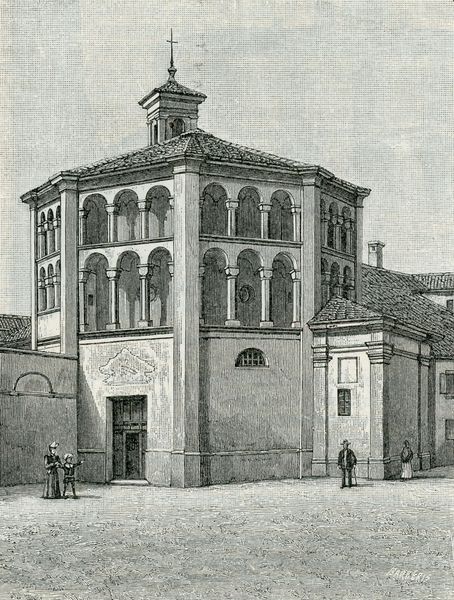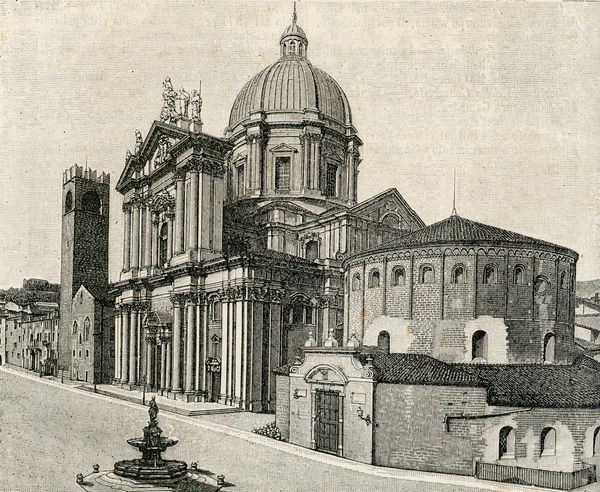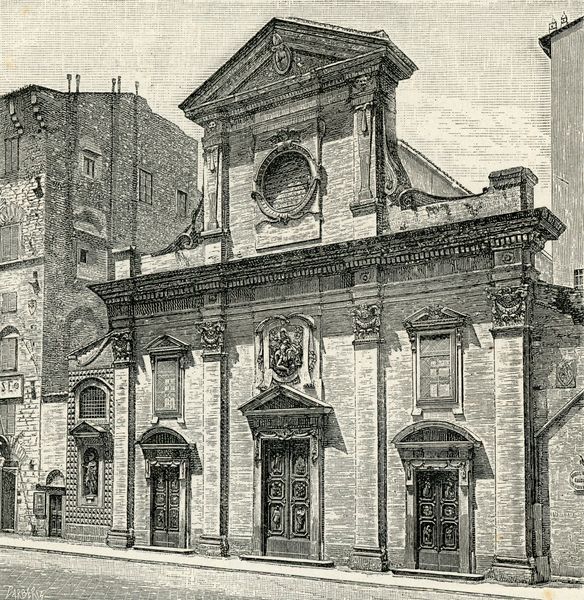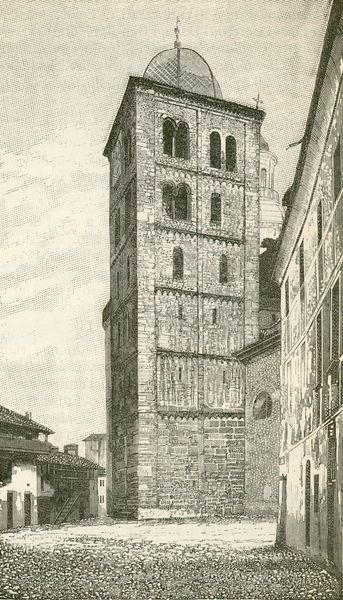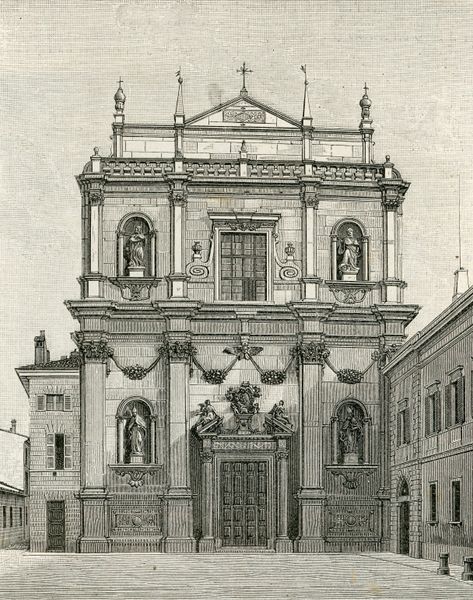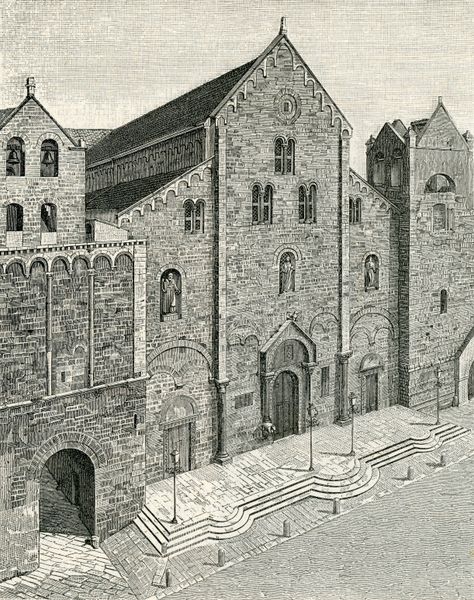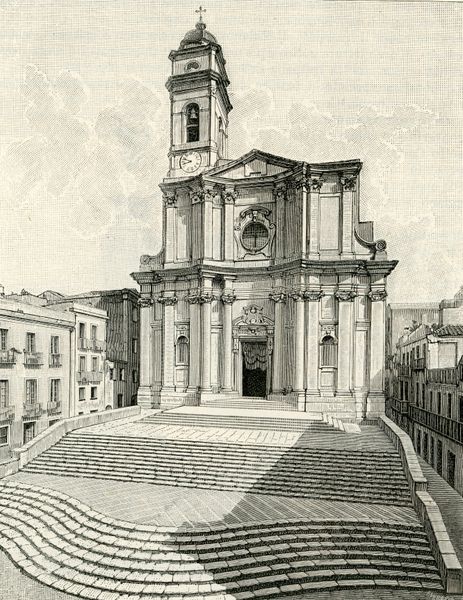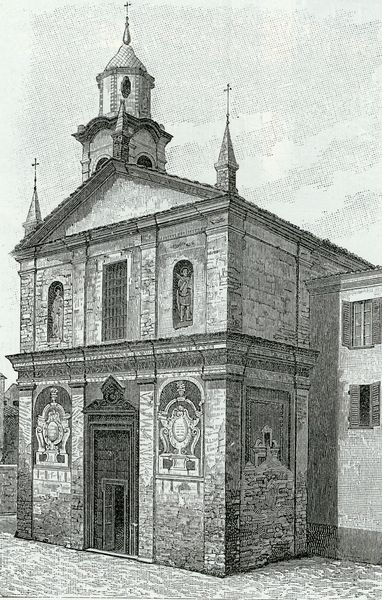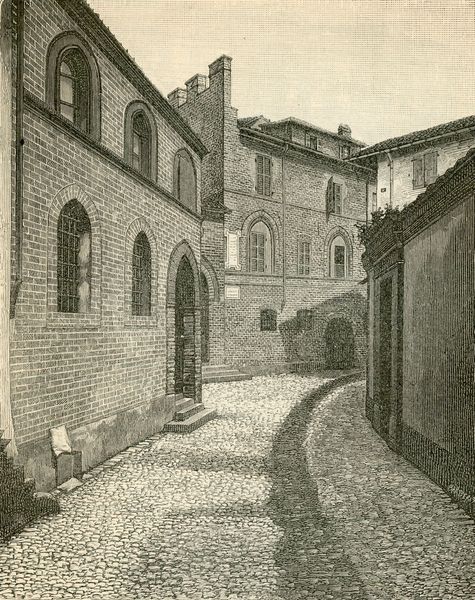
drawing, pen, architecture
#
drawing
#
pencil sketch
#
geometric
#
architecture drawing
#
pen
#
cityscape
#
architecture
Copyright: Public domain
Editor: Here we have Giuseppe Barberis’ "Chiesa Ed Ex-collegio Gesuitico Di San Michele," created in 1893 using pen and pencil. I'm struck by the architectural detail – you can almost feel the weight of the stone. What do you make of this piece? Curator: I’m interested in how Barberis renders this building, attending to the textures created by pen and pencil in relation to the architecture of the Church. Consider the labor involved, the hand moving across the page, creating value and texture to represent this building’s construction. The artistic skill transforms labor into art; would you agree? Editor: Definitely. There’s such precision, even though it's a "simple" drawing. How might its status as a drawing, not a painting, have affected its reception at the time? Curator: That's precisely the point. Drawings, like this, were often preparatory, a step in the production of something "more" finished. Here, however, the drawing is the final object. Barberis elevates a medium historically associated with process to the status of finished work. This collapses traditional hierarchies. Editor: I see what you mean! It makes you think about the artist's role less as a purely aesthetic creator, and more as a skilled worker, shaping the image of the building. Curator: Exactly. It highlights the means of production – the drafting, the precise rendering. We are reminded of the materiality of both the drawing, and of the church it depicts. And, it challenges us to rethink value; not just aesthetic value, but the value we place on different kinds of labor. Does seeing it this way change your perception of the drawing at all? Editor: It definitely adds a whole other layer. It's not just a pretty picture, it's a record of skill and work. Thanks for pointing that out. Curator: My pleasure! It’s about acknowledging the many layers of meaning embedded in the simplest materials.
Comments
No comments
Be the first to comment and join the conversation on the ultimate creative platform.

